Plant Description
Dragon trees (dracaena marginata), also commonly called just by their genus name dracaena, are cheerful, hardy indoor plants native to Mozambique and Madagascar. Although most popularly kept small, these trees can grow many feet tall depending on the variety and placement. The trunk of these trees grow branches in different configurations, making them attractive sculptural centerpieces in a variety of environments.
Shorter types of dracaena have arms like a candelabra, and taller ones divide into many branches and foliage heads. The stem of the plant is known as a cane, a not-quite-woody central structure that develops over time as leaves grow along the stem and fall off. The size of your plant will depend on its age, variety, and how often it gets pruned.
dracaena are named for their dragon-like coloration, as most varieties have thin, blade-like leaves with darker green or red borders. “Marginata” means “edged,” referring to the variegated edges this species is known for. This plant is not difficult to care for, with relatively moderate water and fertilizer requirements.
Dracaena marginata plant facts
| common names | Dragon Tree, Madagascar Dragon Tree |
| botanical name | dracaena marginata |
| no. of species | Na |
| family | Asparagaceae |
| biological life cycle | Perennial |
| foliage | Simple evergreen |
| mature size | Up to 15 feet, up to 3-10 feet wide |
| time to maturity | 3-5 years |
| origins | Mozambique and Madagascar |
| light conditions | Indirect light |
| soil type | Well-drained, moisture retaining |
| water ph | Slightly acidic (6-7) |
| usda zone | 10-12 |
| toxicity | Toxic to pets |
Popular Varieties/Related Plants:
Varieties include: Kiwi, magenta, ray of sunshine
Dracaena marginata care tips
dracaena marginata doesn’t require a lot of attention to thrive. A normal watering schedule and lots of indirect light will keep these plants happy. Have some patience with your dracaena, though, since they are very slow growers. In time and with good care, they grow into bushy, thick-trunked trees.
Dracaena marginata light requirements 🔆
Best light: Bright, indirect light; shade tolerant
In the wild, dracaena plants grow in small groups and near other trees in grassy savannah landscapes, where they get a fair amount of shade. Dracaena marginata grows dense foliage, and multiple heads of leaves from its cane, which provides itself with more shade. Dragon trees prefer rooms that get lots of bright, indirect light when growing indoors. With its naturally deep green leaves that store lots of chlorophyll, it is relatively tolerant of shade.
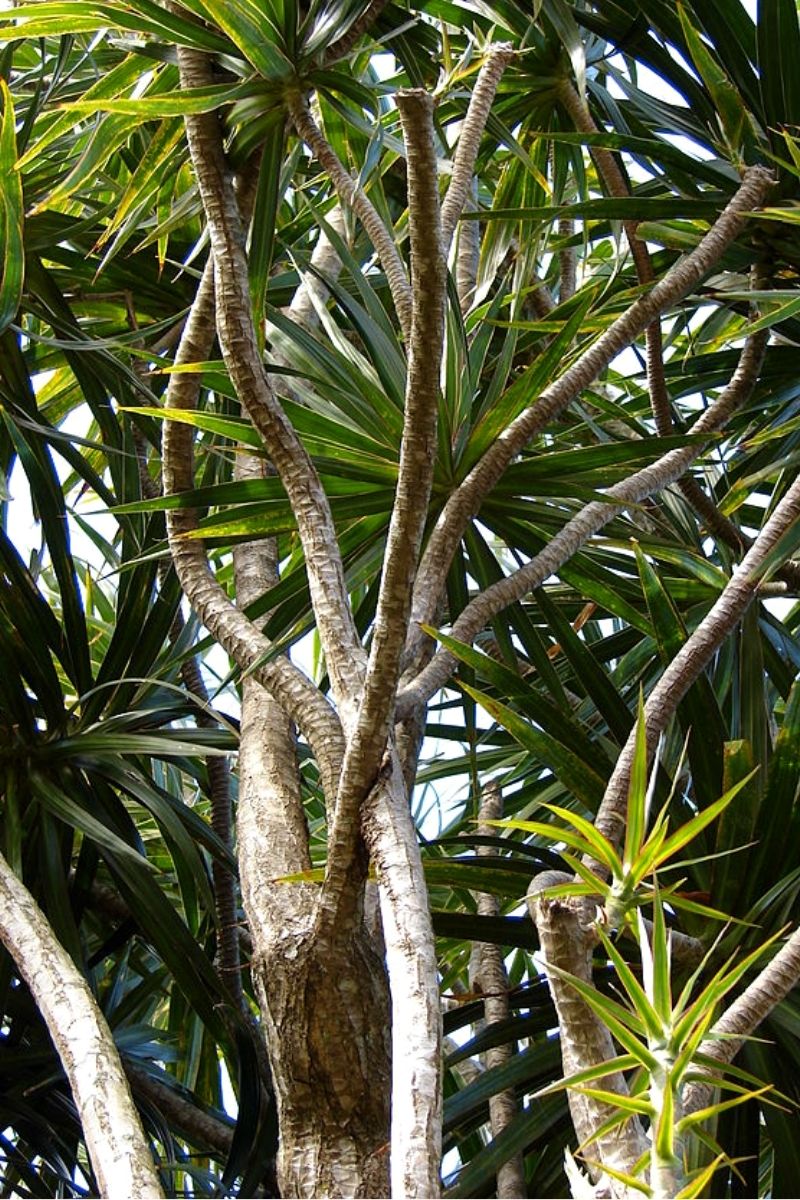
Dracaena marginata water requirements 💧
Water needs: Once or twice a week
Dragon trees have a shallow, fibrous root system that doesn’t reach too deeply in the ground for water. They have a thick trunk that retains moisture, and dark leaves that store energy efficiently. These adaptations make it an easy plant to care for with low watering requirements compared to other house plants. Exactly how often to water dracaena depends on several factors, but they typically like a small amount of water a couple of times a week. They prefer consistently moist soil, not too wet and not too dry, but they can easily withstand drought if need be. You can use a moisture meter to monitor soil moisture levels.
Dracaena marginata humidity requirements 🌫️
The dragon tree is comfortable in low to moderate humidity, although it won’t be damaged if there is moisture in the air. Since it grows in open plains, the dracaena marginata can tolerate the mid to low humidity levels found in most homes. These plants appreciate a spray from a water bottle now and then, but won’t suffer without it.
Dracaena marginata temperature requirements 🌡️
Dracaena enjoys temperatures between 60 and 80 degrees year-round in its native habitat. Low or high temperatures out of this range can stress the plant. If summer temperatures are high, be sure to water a little more frequently than usual so the plant’s soil doesn’t dry out too much.
Dracaena marginata fertilizer requirements 💩
Since dragon plants grow amongst grass, shrubs and trees in the savanna, it’s highly efficient with nutrient uptake from the soil. This means dracaena marginata doesn’t need too much fertilizer: Once a year in spring during the growing season should be enough.
Dracaena marginata soil requirements
Soil Type: Well-drained, moisture retaining, loamy
pH level: Slightly acidic (6-7)
Dracaena marginata is most comfortable in soil that stays slightly moist, but doesn’t hold lots of water. The small root system relative to the trunk and foliage can easily be damaged by water-saturated soil, but the roots can also dry out if left without water for too long. Potting a dracaena marginata in loamy soil that drains water but holds moisture will keep it happiest. Use materials like clay, sphagnum moss, or LECA in your potting soil mix to keep the soil moist for longer periods at a time without overwatering.
Repotting dracaena marginata plants
It’s easy to re-pot a dragon tree. As they grow, they will need progressively larger pts to keep them stable. The biggest issue that dragon tree plant parents typically struggle with is managing a top heavy plant. Always choose pots that can support the weight of the plant and prevent root damage – they can tear their shallow root system when they topple. Don’t use a pot that’s too big though, because too much soil area can also destabilize the shallow root system. Transferring a dracaena marginata can be done easily by preparing some soil in a new pot and moving the plant and root-bound soil to the new location, covering it up with more fresh soil, and giving the plant a fresh sip of water.
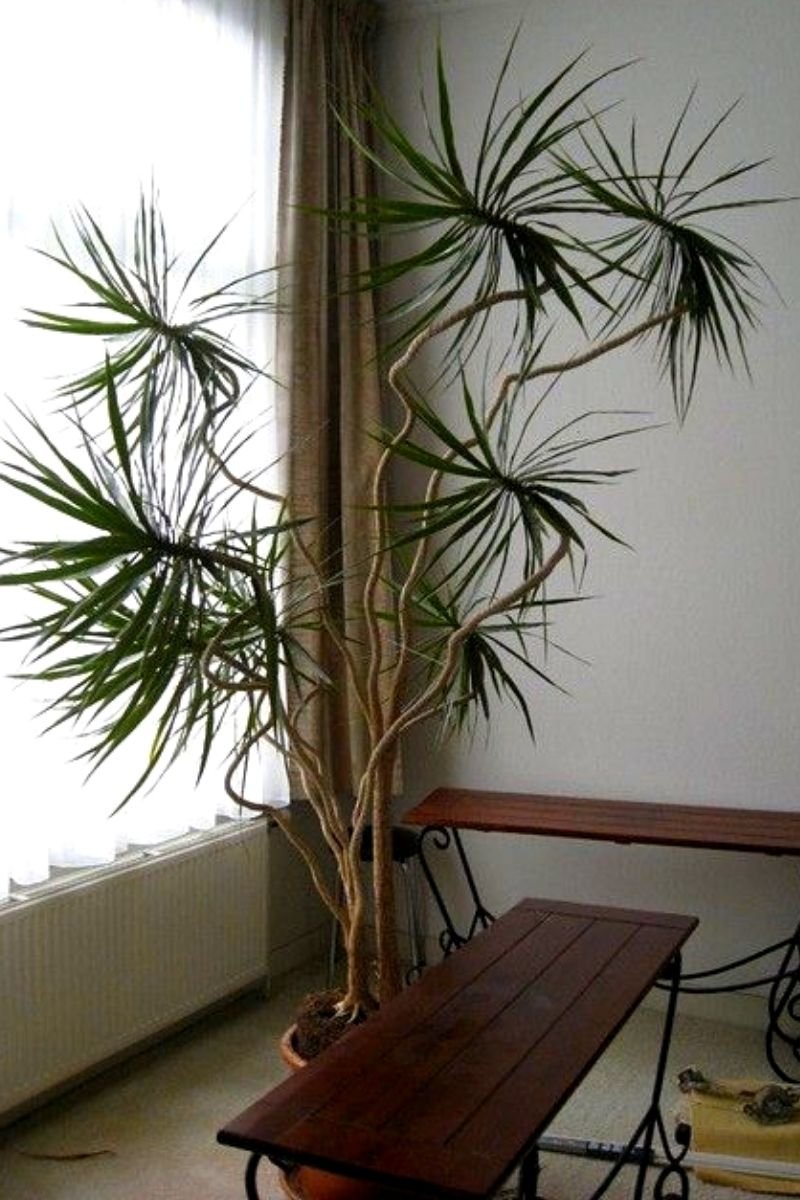
Propagating dracaena marginata plants 🌱
Dracaena marginata are as easy to propagate as they are to repot. For dragon trees with multiple branches and heads, as well as for single-cane individuals, you simply cut the cane with about 6 inches of body, and leave it to dry for a day or two before planting in new soil. The newly planted cane with foliage will sprout roots after a week or two. In the same amount of time, the parent specimen with roots and a stalk but no foliage should start to sprout new growth of leaves along the cane. Since these are known as bunching plants, you can have multiple canes growing in a single pot.
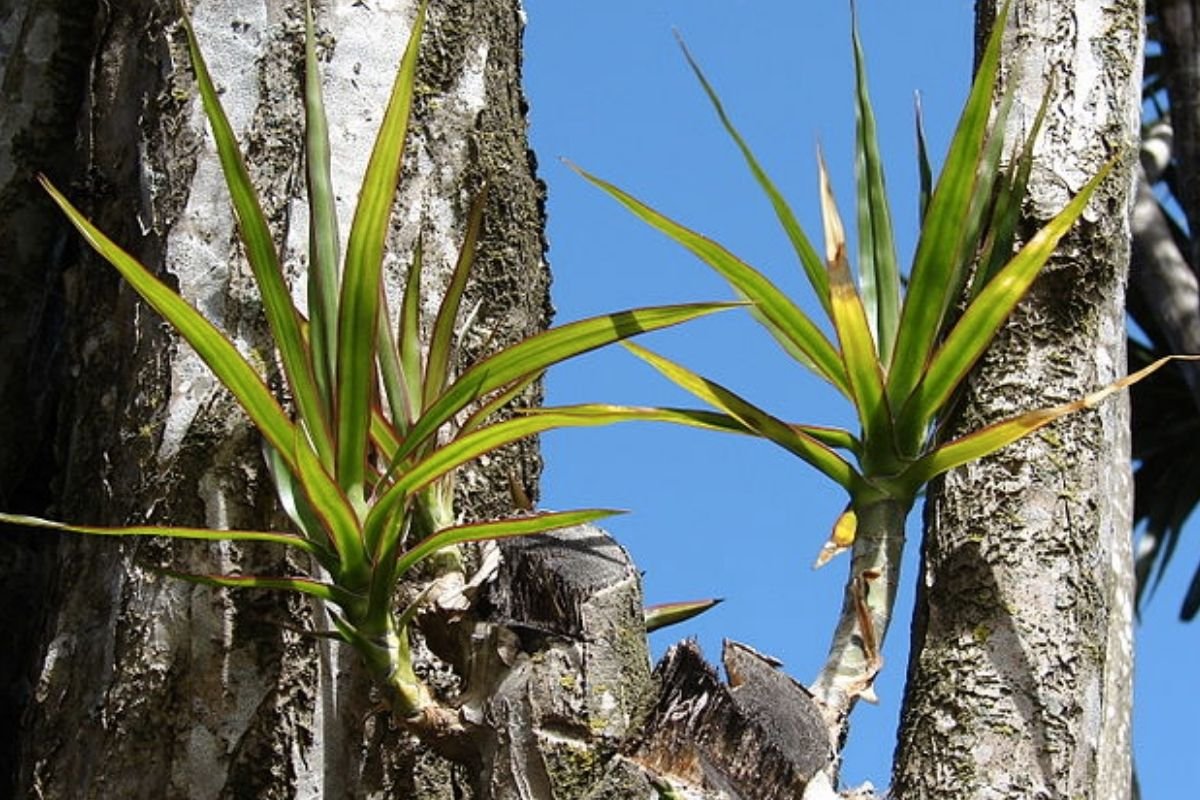
Pruning dracaena marginata plants 🌿
You’ll need to prune your dracaena if it grows larger than your space allows. If the plant is getting very tall, and you don’t want to move it, consider propagating one or more of the plant’s foliage heads. This is a great opportunity to grow more plants or to give some away. The plant’s internal leaves can turn brown or get spotty from changes in water or other stressors, so remove them as necessary by clipping closely against the stalk. The leaves usually wilt from the bottom upwards, so trim these lower leaves as you see fit.
Pests and diseases 🐛
Dragon trees occasionally suffer infestation by thrips, spider mites, mealybugs, and other small insects that burrow into the base of their thick leaves. If you find any pests in your marginata plant, use neem oil or soapy water solution to naturally eliminate the unwanted bugs. For more severe infestations, rinse the plant thoroughly outdoors to remove visible pests and larvae before treating it with an insecticide.
Dracaena marginata plant care tips
- Rotate your dracaena marginata so it grows evenly. The leaves of a dracaena will reach for whatever light source is strongest in its environment. The problems and risks of a top heavy plant increase if left to grow in one direction over time. Rotate your dracaena every month or two to help it grow up straight and reduce lean towards a dominant light source.
Common Problems / FAQs:
Why does my dragon plant’s leaves have brown tips?
You may notice the tips of your dracaena’s sword-like leaves turning brown for a number of reasons. If the plant undergoes a temperature shock or gets dehydrated, the points of its green leaves will dry out and turn brown to conserve water for the body of the plant. This can also happen if the water you’re giving your plant is too hard (rich in minerals). Try using distilled water if you know your local water is hard and suspect that this may be the problem. Otherwise, brown leaf tips can simply come from age and are a normal sign of having endured some stress at some point.
What do I do about yellow leaves?
Yellow leaves on your dracaena marginata plants are usually a sign of overwatering, so check the soil moisture. If the soil seems to be dry, the yellowing may be caused by stress from pests living in the plant, so check the base of leaves along the cane to see if you can find any signs of tiny residents.
Why is my Madagascar dragon tree losing leaves at the top of the crown?
As dracaena marginata plants age, the oldest leaves at the bottom will wilt and die, and as they fall off, the cane will become more exposed. If, however, your marginata is losing leaves from the top, it is likely a sign of either a pest infection or overwatering. If you don’t see any insects, consider watering the plant less and allowing the soil to dry out more in between each watering.
Shop our recommendations
- The Best Hydroponic Tower For Indoor Gardening
- 10 Best Worm Composter Bins For Easy Homemade Compost
- The Best pH Meter For Soil
- The 6 Best Dehumidifiers For Grow Tents
- The Best Complete Indoor Hydroponic Grow System
- 5 Best Grow Light Strips For Indoor Plants
- TESTED: Aerogarden vs Click and Grow Smart Garden
- Our *hands on* MARS HYDRO TSW 2000 review (with photos)
- 7 Best Hygrometers For Indoor Plants
- The Best Coco Coir For Your Plant’s Healthiest Root System Ever

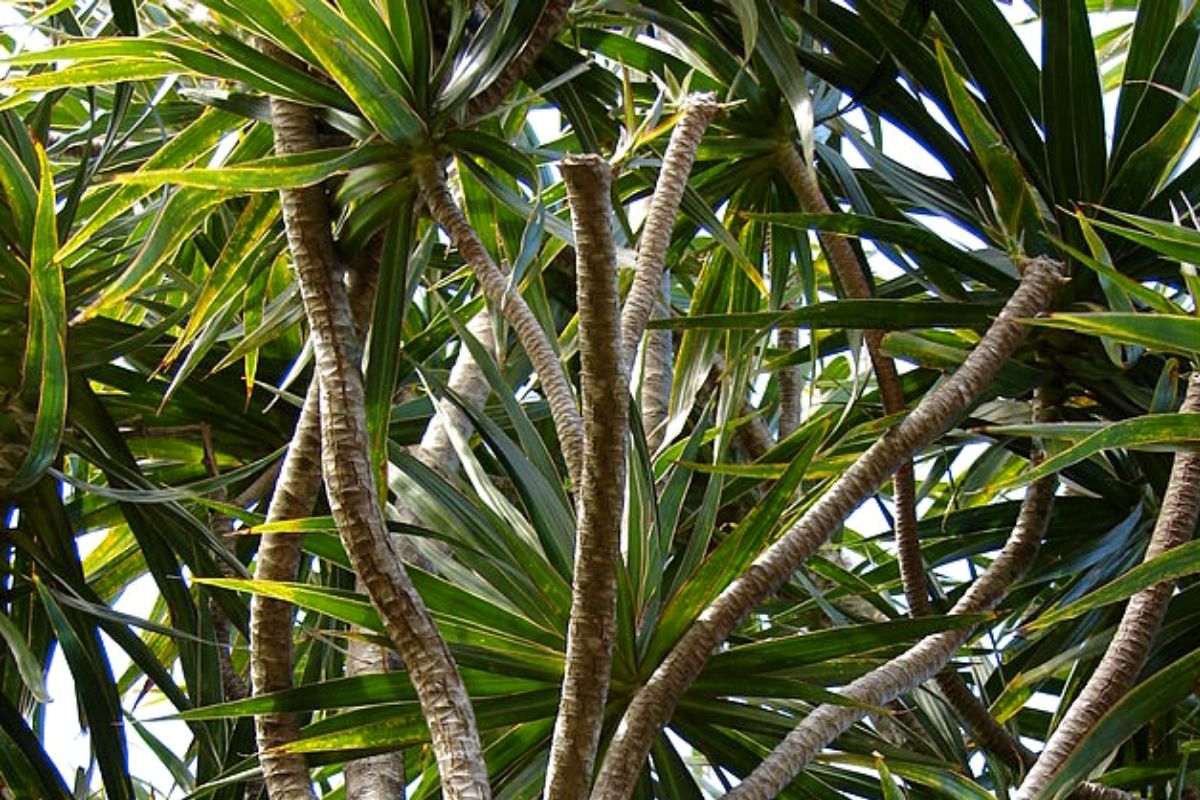
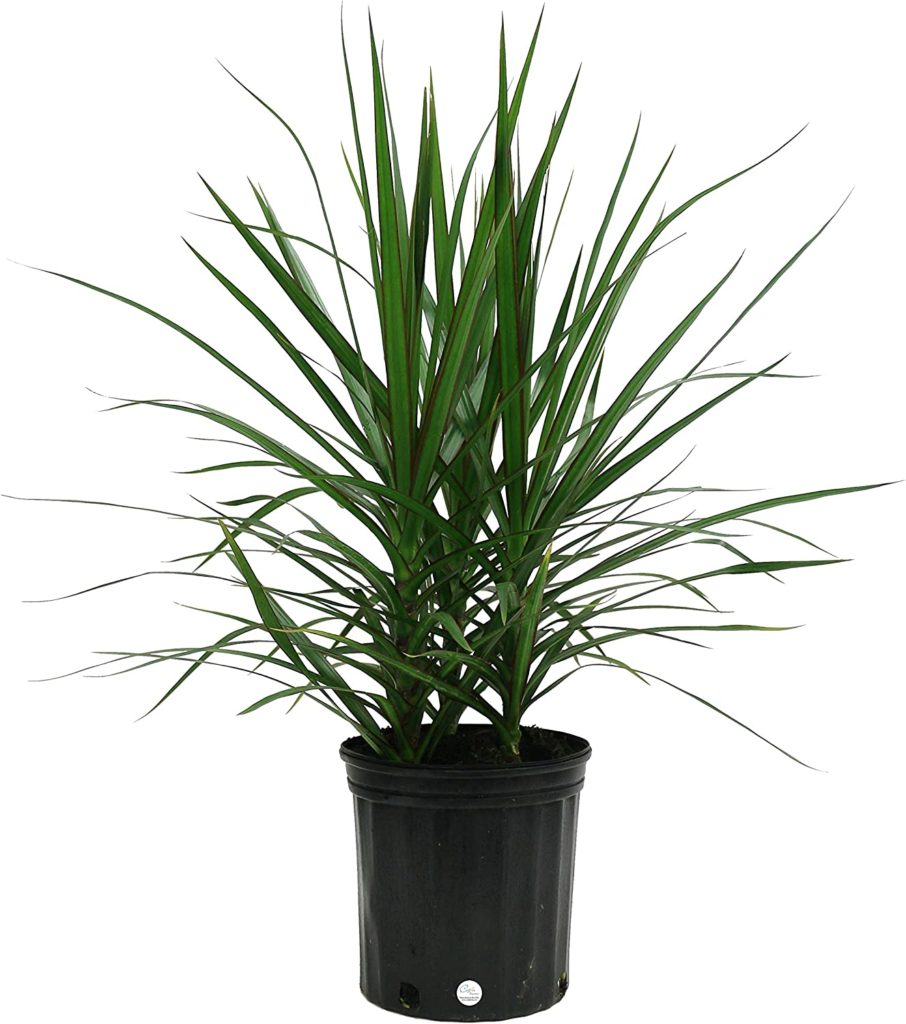









Hey, Marcia! Thanks for reading :) gosh, that's a great idea to double up on your watering globe and spike.…